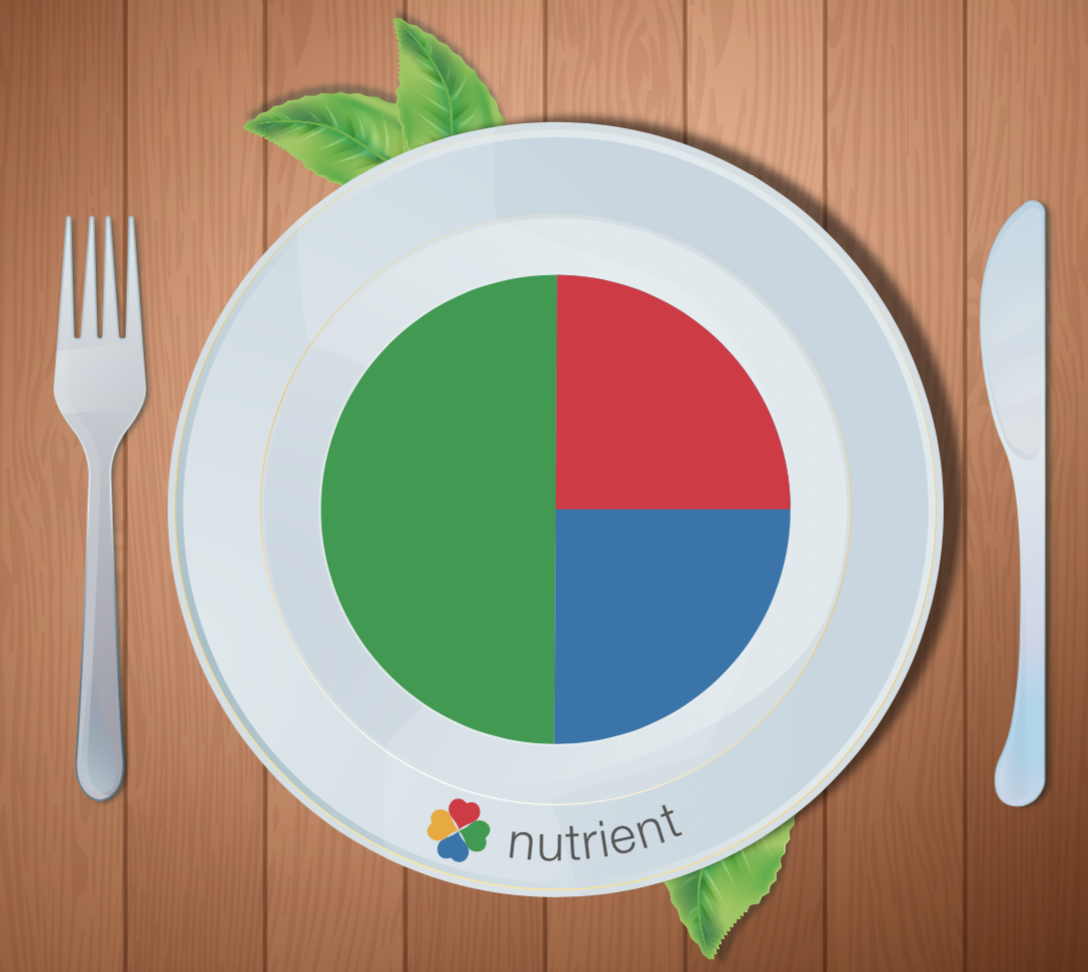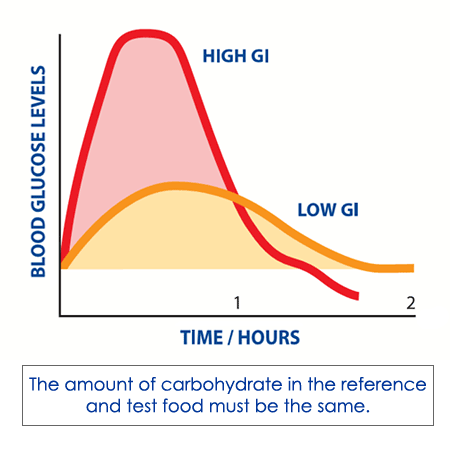On this page you can find:
-
- A healthy plate;
- General advices on nutrition;
- Nutrient-rich foods;
- Glycemic Index-Load (GI-GL);
- Seagan nutrition;
- A healthy food pyramid;
- Metabolism;
- Food additives.
➡️ to eat is a necessity, but to eat intelligently is an art (F. de La Rochefoucauld)
➡️ All disease begins in the gut (Hippocrates, the Father of Modern Medicine)
➡️ Eat food. Not too much. Mostly plants (Michael Pollan)
Having a healthy nutrition is not something you were born with, it is a skill that can be learned, the same way you learn to ride a bike or drive a car. Under medical and nutritional supervision, we should adapt our diet to a plan-based one, for 3 essential reasons: for health, for ecology and for ethics. The nutrition should be healthy (gluten-free or ancient grains, refined-sugar-free, nutrient-dense).
It is enough to deny, out of ignorance or interest, the scientific evidence on the benefits of a plant-based diet.
There are foods that are generally tolerated by everyone, others that are a big “no” for everyone and finally others that are different for each, so very individual. Food that is beneficial to one person can be harmful to another. So I suggest to track them on a food diary and observe your reaction.
1. A healthy plate
To make your life easier, I have created a balanced dish:

50% of beneficial vegetables, raw or steamed (avoid overcooking >100°C, prefer steam cooking, reduce raw tomatoes, eggplant, peppers, beans, soy, white potatoes, but instead eat sweet or violet potatoes). Beneficial vegs provide a higher quality of nutrients. Organic, local and seasonal vegs are more rich in nutrients and flavors.
25% of beneficial carbohydrates like ancient grains (Senatore Cappelli, Tumida siciliana, Tumilia, Russello, Perciasacchi, Margherito), whole-grains or naturally without gluten grain like millet, rice, amaranth, buckwheat, … beneficial carbs have a low glycemic index, i.e. a low insulin stimulation (see GI paragraph below). The carbs may exist as monosaccharides (simple sugars) , disaccharides, oligosaccharides or polysaccharides and are digested into glucose. For more, please see on the weblink of our Confederation (DE FR IT EN).
25% of protein-rich foods like pulses, peas, chickpeas, lentils (only with a pressure cooking to destroy lectins) , fish (max 2-3 portions per week) or egg (1 every 2 weeks). The total amount of protein, contained in these foods should be < 8% of the total meal. For more, please see on the weblink of our Confederation (DE FR IT EN).
➡️ compose your own plate with the right quantity like in nutrient dish, then mix…
2. General advices on nutrition
⚠️ do a thorough check of your health, with a blood test, at your medical center before and after the change in eating habits and lifestyle. This is very important to have a first check an a followup on your medical values.
⚠️ to keep your Body Mass Index (BMI) normal, move directly after a carbohydrate-rich meal and eat less carbohydrates (max. 1/4 of dish).
✅ 1° meal, breakfast (e.g. <1h after wake-up, 6-9 am);
✅ 2° meal, balanced lunch “nutrient” (e.g. 11 am – 1 pm);
✅ 3° meal, light dinner (e.g. 5-6 pm, max. 8 pm). The body burns more than twice as much energy in the morning as in the evening;
✅ Biodiversity: have a wide diversity of foods (vary from day to day);
✅ Tap water, drink most outside meals, e.g. one glass of water every hour, because drinking during meals dilutes gastric juices and digestion is therefore less effective. The quality of your tap water is very important and if the quality is not granted, it can be filtered (e.g. Elysion Wasser);
✅ Fruit: eat 1 portion (120 g) of one kind of fruit per day, mainly at breakfast or before 2 pm, never eat fruit after the meals and at dinner. Prefer bio, local and seasonal (you will discover that are more tasty);
✅ Vegs: eat 4 portions (4x120g) of vegetables per day. Prefer bio, local and seasonal (you will discover that are more tasty);
✅ IF (Intermittent Fasting): plan to fast according to specific protocols, important: only with medical attention. To learn more you can get a medical online course, called iFast (Metabolism Academy, Dr. Fabio Piccini). Fasting triggers important recycling processes in the cells – the cell removes waste products and feeds on them (nutrition from within). I suggest you anticipate dinner to achieve at least 16 hours of fasting (the night is counted in the fasting hours) and start the first meal that breaks the fast (break-fast) with a generous portion of local, seasonal, organic fruits or vegetables. Too much is too much: to achieve optimal results, I recommend fasting for about 16 hours, and to set yourself more ambitious goals only every now and then. The most important thing is to adapt fasting to your needs : always listen to your body.
✅ CR (Caloric Restriction): plan to eat less (min. 20%, opt. 30-50%) calories per day;
✅ Sprouts: eat them frequently, this food is very rich in nutrients. If you want to do them by yourself, buy the best quality on www.sprossensamen.ch, to learn more follow Angelika Fürstler of their Facebook Group;
➡️ eat ONLY ONE plate per meal;
➡️ eat after 4h from the last meal in a food interval of 8h, find more information on our circadian rhythms on www.mycircadianclock.org, digestion still lasts 4 hours; For kids or adolescents is different (is 2.5 h, they must eat 5 times a day)
➡️ the proportion of carbs should be higher depending on the level of physical activity (inactivity 20%, light to moderate 25%, intense to very intense 30-40%) and never eat carbs for dinner;
➡️ proper chewing, i.e. slowly and focus on the act of eating, without distractions such as TV or tablet. This is specially important for carbs as saliva contains enzymes that metabolize these substances. These enzymes are not present in the intestine, but only in the mouth.;
⛔️ avoid any type of sugars: the World Health Organisation (WHO) warns against excessive consumption of sugar added to food or naturally present in honey, syrup, fruit juices and fruit juice concentrates;
⛔️ avoid processed/ultra-processed food, dairy, refined flours and foods, additives, pesticides, meat, alcohol and added sugars. Cook simple food by yourself;
⛔️ the proportions of food that have been indicated in the nutrient dish should NOT be applied in special cases such as children, youths, pregnant or breastfeeding woman, for elders or people with particular diseases.
➡️ in those cases, consult a doctor with relative specialization (pediatrician, gynecologist, geriatrician or others) who can determine your individual medical needs and, if necessary, prescribe dietary supplements;
⛔️ avoids any type of dietary supplement that is to hang absolutely ONLY on medical prescription;
⛔️ avoids overcooking food (avoid >100-120°C): steam cooking is the best choice, pressure choosing for all legumes, lentils, chickpeas, peas…
In recognizing the power of our daily food intake for the health of our body, we should imagine a food pyramid, with the priorities on water, vegetables and fruit, ancient grains or millet, legumes, nuts, avocado and oils, and a maximum of 2-3 portions of fish per week.
If you are vegan, plan blood test to control vitamin A, D, B9, B12 each 4 months. Discuss with your doctor, if you need to integrate nutrients. I suggest to integrate the essential vitamins A, D and K2, because they are more present in food of animal origin. But if you eat fish (seagan), you do not need an integration, except for vitamin D and K2.
The benefits for these change in nutrition are a better body energy, a protection against all diseases (prevention), a better healing process, a positive effect on our body, mind, sleep and, in general, a healthier life.
3. Nutrient-rich foods
More raw food provides a large amount of nutrients, such as vitamins, minerals and enzymes that would be lost when cooked. Some develop toxic substances by cooking (e.g. Maillard products). The egg is an exception because it must be well cooked to be healthy. However, not all foods can be eaten raw because they’re inedible.(e.g. legumes, grains). In this case, you can sprout them to transform them as edible. Food loses many nutrients if refined, cooked, sterilized or processed with different food technologies. Today we are witnessing an impoverishment of nutrients due to technology and we want to compensate for this shortcoming with supplements. But we are wrong! Because there is no comparison between synthetic supplements and phytochemical complexes in fresh, preferably seasonal, local and organic food. Better to eat less, but of quality.
⚠️❌ absolutely avoid DIY (do-it-yourself) and get medical attention.
4. Glycemic Index (GI) and Glycemic Load (GL)
Metabolism: insulin lowers the blood sugar level, but promotes inflammation! As soon as you eat a meal rich in carbohydrates, your blood sugar level rises automatically. The body then releases insulin to lower this level again. Proteins also need insulin for metabolism, but much less than carbohydrates. If you don’t burn freshly eaten carbohydrates immediately, with some movement, the body stores this excess energy, not in the form of muscle, but in the form of fat. In general, the fat metabolism only slowly gets going. To keep your Body Mass Index (BMI) normal, move directly after a carbohydrate-rich meal and eat less carbohydrates.
The Glycemic Index gives us a clear idea of how much quantity of easily digested carbohydrates (like monosaccharides, simply sugars, like glucose, fructose, sucrose AND disaccharides like sucrose, maltose, lactose) are present in the food, and so indicates the food’s effect on a person’s blood glucose.
– a high GI is > 70
– a medium GI is 56-69
– a low GI is < 55 (whole grains, fruit, vegetables)
This number indicate the extent to which the carbohydrates raise the blood sugar levels after eating. This value tells you how fast the carbohydrate in a food will raise blood sugar level. Here is the chart for the GI:

Whenever sugar levels go up excessively in the blood, it results in a large amount of work for the body.
And this is a significant cause of cellular damage and aging.
The Glycemic Load (GL) takes into account the amount of carbohydrates within a certain quantity of serving (a portion, for example one apple) that will cause your blood sugar to raise. The pumpkin is a good example: even if he has a high GI (75), he still has a low GL (3), these values can be found here. The overall impact of this food is smaller on your blood sugar level.
The University of Sydney has explained, in details, this issue and is in different languages available (IT, DE, FR and so on) and has created an excellent world-wide database for each GI and GL on food. For more information see: http://www.glycemicindex.com
For more information see also this study on the website of the American Diabetes Association: Fiona S. Atkinson et al, International Tables of Glycemic Index and Glycemic Load Values, 2008.
In the future, the doctors may be more interested in evaluating the state of your microbiome than your BMI and, if needed, they will prescribed a nutrition rich in dietary fibers (whole grains, vegetables and fruits). The best choice is whole rice bread with hummus (low GL and high dietary fibers). The FDA recommends that an adult male consume 38 grams of fibre and 29 grams of fibre for female per day.
5. Seagan nutrition (seafoods/fish and vegan)
I decided on a seagan diet with my doctors for health reasons (cancer) and for my general well-being. In addition to the seagan nutrition, no sugars, refined flour, processed food, junk food, artificially-added chemicals and/or flavourings are allowed (I eat only organic, local and seasonal).
What? A whole-food plant-based diet that includes fruit, vegetables, legumes, nuts, seeds, and whole grains, food derived from seafood (2-3 portions of seafood per week as long as it is sustainably-fished, low-mercury seafood) and 1 egg each 2 weeks.
We suggest that you read this interesting article in the Huffington Post (July 2016) which introduces the concept of a seagan diet. The article introduces an informative book called ‘Seagan Eating‘, by Cramer and McComsey, which makes a strong case for those looking for a healthier diet but unable to go “whole-hog” vegan to take the plunge. The book is available to buy at amazon.
These main foods (organic, local, seasonal) are:
– 50% of vegetables, raw or steamed
– 25% of carbohydrates (e.g. whole grains)
– 25% of protein-rich foods like beans, seafood (max 3 x week) or egg (1 each 2 weeks)
6. A healthy food pyramid
Find the healthy food pyramid at Oldways, a non-profit food and nutrition education organization with a mission to inspire healthy eating through cultural food traditions and lifestyles. The organization is well-known for creating the Vegetarian Diet Pyramid.
The basic nutrients for our body are given by carbohydrates, proteins
and fats.
In general, less processed and less cooked carbohydrates are more health-friendly, such as whole wheat flours. Avoid refined flours in your diet.
And remember that the cooking methods of foods affect the GI of carbohydrates.
Lastly, focus on your meal and don’t do anything else at the same time, like answering emails or watching television. Have balanced meals even at work.
7. Metabolism
The metabolism is divided into catabolism, the breakdown of molecules to obtain energy, and anabolism, the synthesis of all compounds needed by the cells.
The nutrients that provide this energy are commonly referred to as macronutrients (carbohydrates, lipids, and proteins).
Carbohydrates (Carbs) and proteins (Prots) provide a similar amount of energy per gram of food.
Lipids are a concentrated source of energy and provide almost twice the amount of energy than that supplied by proteins and carbohydrates.
Here the energy content for each:
1 g Carbs = 4.2 Cal (kcal) or 17.6 kJ
1 g Prots = 4.1 Cal (kcal) or 17.2 kJ
1 g Lipids = 9.3 Cal (kcal) or 38.9 kJ
(1 g alcool = 7 Cal)
Your basal metabolism is the minimum energy expenditure necessary to maintain vital functions and waking state, ca. 60-70% of the total energy required. This energy depends on your body, sex, age, activity and can be calculated online: https://www.calculator.net/bmr-calculator.html
The calories from the food could be estimated with different apps for smartphone (e. g. MyFitnessPal). Instead, the calories consumed during the day could be estimated with an activity trackers (e.g. Garmin Vivo Smart 4). the calories taken from food must not be greater than those consumed.
If you speak Italian, I suggest this online courses iHack and iSlim of Metabolism Academy, Dr. Fabio Piccini.
8. Food additives
Try to eat your own fresh and cooked food, to avoid the industrial ones as much as possible. If you have to, buy those with as few additives as possible. To find out which number a substance corresponds to, you can look directly in the Food Ordinance , 817.022.31, annex 1a, list of permitted additives E100-E1521 (Choose your language DE, FR, IT on the top).
⚠️ Avoid Do It Yourself (DIY) and consult medical nutrition specialists.
Disclaimer: This text is only for illustration purposes and does not replace your doctor’s opinion. It is not intended to provide medical advice, diagnosis or treatment. Absolutely avoid DIY (do-it-yourself) and get medical attention.
Fist edition 10.05.2017
Last update 23.03.2023
